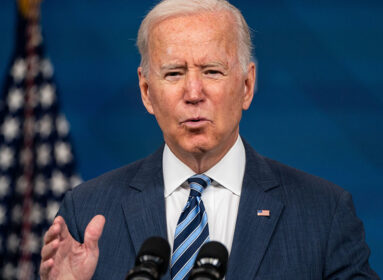
Based on a book by Trinity College professor Sam Kassow, a new documentary reveals a secret Warsaw Ghetto treasure
By Cindy Mindell
In 1940, historian Emanuel Ringelblum established a clandestine organization – code-named Oyneg Shabes – in Nazi-occupied Warsaw. His objective: to study and document all facets of Jewish life in wartime Poland and to compile an archive that would preserve this history for posterity.
As the Final Solution unfolded, Oyneg Shabes persevered in its work until spring 1943, gathering thousands of testimonies from natives of Warsaw and refugees from hundreds of other localities, and creating a documentary record of the wartime fate of Polish Jewry. Of its more than 60 members, only three survived. Ringelblum and his family perished in March 1944. But before he died, he and his fellow archivists managed to hide thousands of documents in milk cans and tin boxes, burying them beneath the rubble of the Warsaw Ghetto.
Guided by the three surviving Oyneg Shabes members, teams of Polish and Jewish searchers discovered two of these buried caches in 1946 and 1950. The documents were housed for decades in the underfunded Jewish Historical Institute of Warsaw. Finally, in 1990, funding was made available to apply modern preservation techniques on the crumbling archive. Written in Yiddish and Polish and largely untranslated, the archive comprises some 35,000 pages, including documents, materials from the underground press, photographs, memoirs, essays, and much more.

A street scene from “Who Will Write Our History.” Lisa Kassow and her sister Cheryl Pleskow were “extras” on the film (seen here being wheeled in a carriage). Photo credit: Anna Wloch
Among the researchers who examined the chache in the mid-‘90s was Dr. Samuel D. Kassow, a history professor at Trinity College in Hartford. In 2007, Kassow brought to life the tragic story of Ringelblum and his heroic determination to use historical scholarship to preserve the memory of an endangered people. Hailed by reviewers as an invaluable Holocaust-era resource, Kassow’s book, Who Will Write Our History? Emanuel Ringelblum, the Warsaw Ghetto, and the Oyneg Shabes Archive, is now being made into a documentary film, produced and directed by award-winning filmmaker Roberta Grossman (Hava Nagila; Above and Beyond) and Katahdin Productions. Nancy Spielberg is executive producer.
“Roberta read the book, really liked it, and decided to buy the rights to film it [in 2013],” says Kassow, who served as a consultant on the project. In April, Kassow spent three weeks on set in Lodz and Warsaw during the filming. Because there is not a lot of documentary footage of the Warsaw Ghetto, Grossman relied on reenactments, employing hundreds of extras – including Kassow’s wife, Lisa Pleskow Kassow, director of Trinity College Hillel. Their daughter, Serena, had a bit part in the film.
“There were many moments that were very striking, but one of the first was standing amidst 150 other extras, most of whom were wearing Jewish Star armbands,” Lisa recalls. “We had to use the restroom in a very old pre-war building in Lodz, where the wardrobe and makeup areas were. I walked into a bathroom and there was a young ‘Nazi’ shaving – a tall, blond, six-foot-tall, skinny 19-year-old extra in a uniform. It took my breath away.”
While watching the filming, Kassow says that he experienced “a feeling of wonder.”
“I write a book and it turns into a big project, with a hundred people and a camera crew. At the same time, there’s a feeling of gratification that something that I started to write about and that very few people know about is getting better known because of my work, and that the film will probably reach more people than the book did.”
Now in the editing stage, “Who Will Write Our History” is slated for release in 2017.
The entire Ringelblum Archive, included in UNESCO’s “Memory of the World” Register, is available to researchers in digital format in the United States Holocaust Memorial Museum’s Archives and at the Jewish Historical Institute in Warsaw.
CAP: Sam Kassow and his daughter Serena on the set of “Who Will Write Our History.” Photo credit: Anna Wloch







 Southern New England Jewish Ledger
Southern New England Jewish Ledger













